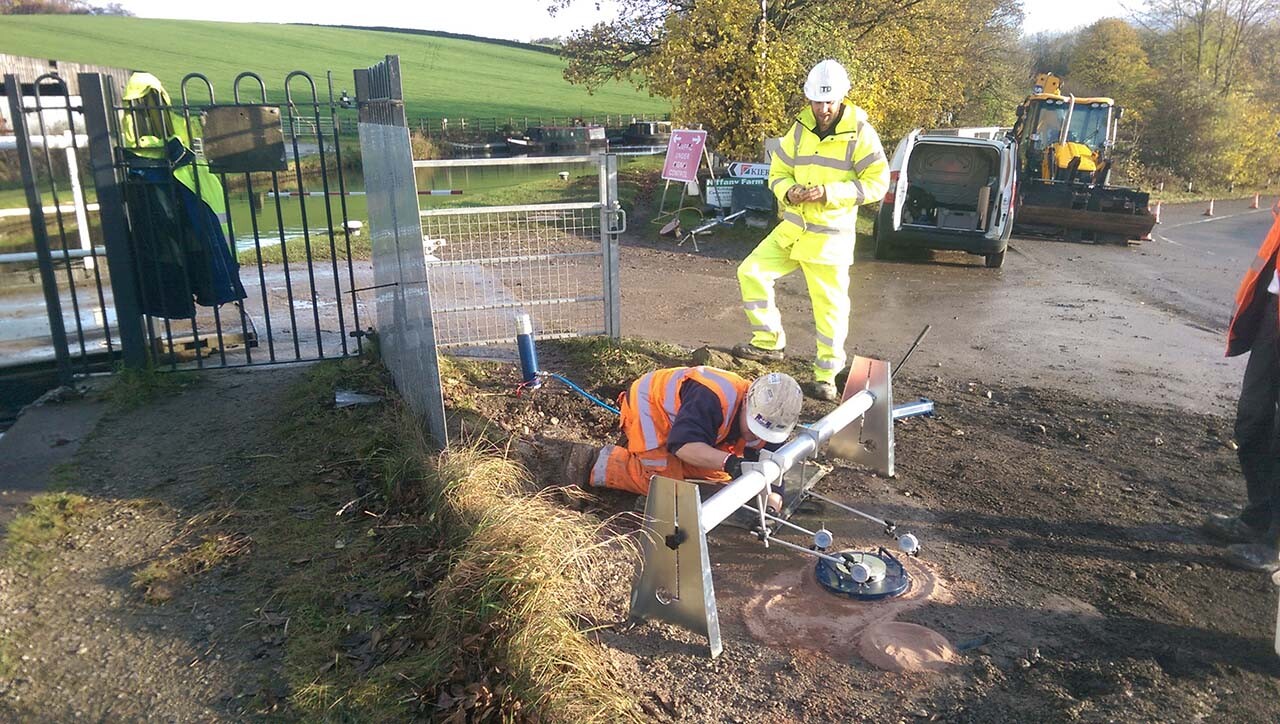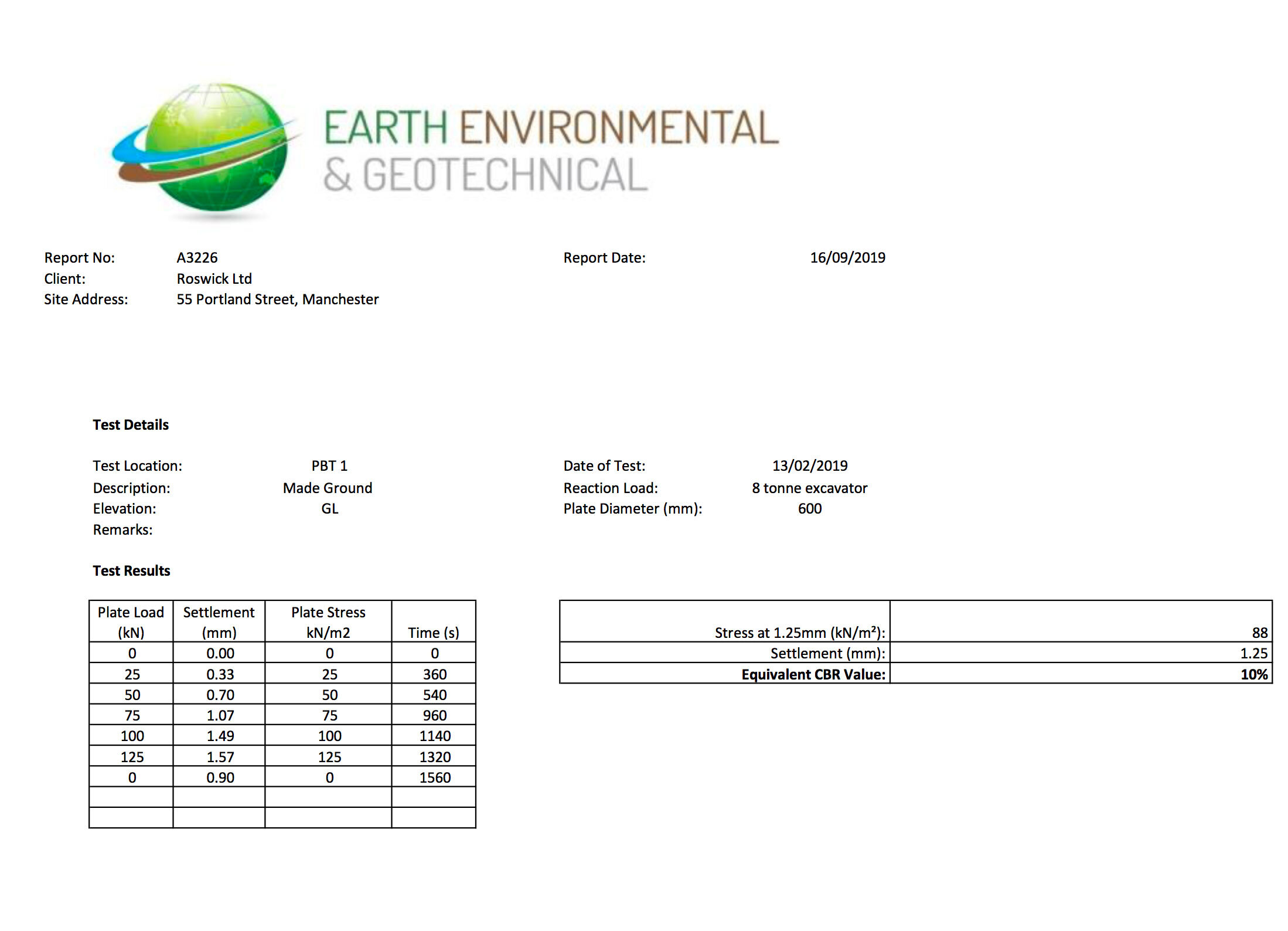Example of a Plate Bearing Test Report (or Plate Loading Test)
What is involved in a Plate Bearing Test (or Plate Loading Test) and what does the report actually look like?
The Plate Bearing Test (or Plate Loading Test) is an in-situ field test used to determine the ultimate bearing capacity of rocks and soils and anticipated settlement beneath an imposed load.
But what is actually in the report?
Here is an example of a Plate Bearing Test (or Plate Loading Test). The objective of the test is to obtain a load-settlement curve of a soil at a particular depth, to estimate the ultimate bearing capacity of the foundation. The load intensity and settlement observation of the plate load test are plotted. The graph shows the load settlement curve. The ultimate bearing capacity is taken as the load at which the plate starts sinking at a rapid rate, i.e. when the curve drops down to a vertical line.
Why would I need a Plate Bearing Test?
Plate Bearing Test is helpful for the selection and design of the foundations required, or if temporary or retaining structures are required.
A Plate Bearing Test can also be used to determine whether the ground has sufficient bearing capacity to support a given structure such as temporary pads for crane outriggers or piling rigs. It is very useful for mobile crane operators and piling rig contractors to check potential settlement of crane pads or mats under full load before the mobile crane or piling rig is sited or when traversing the site.
CALL US NOW. We are happy to discuss any questions you may about Plate Bearing Tests – How it affects you and how we can help with your development.






